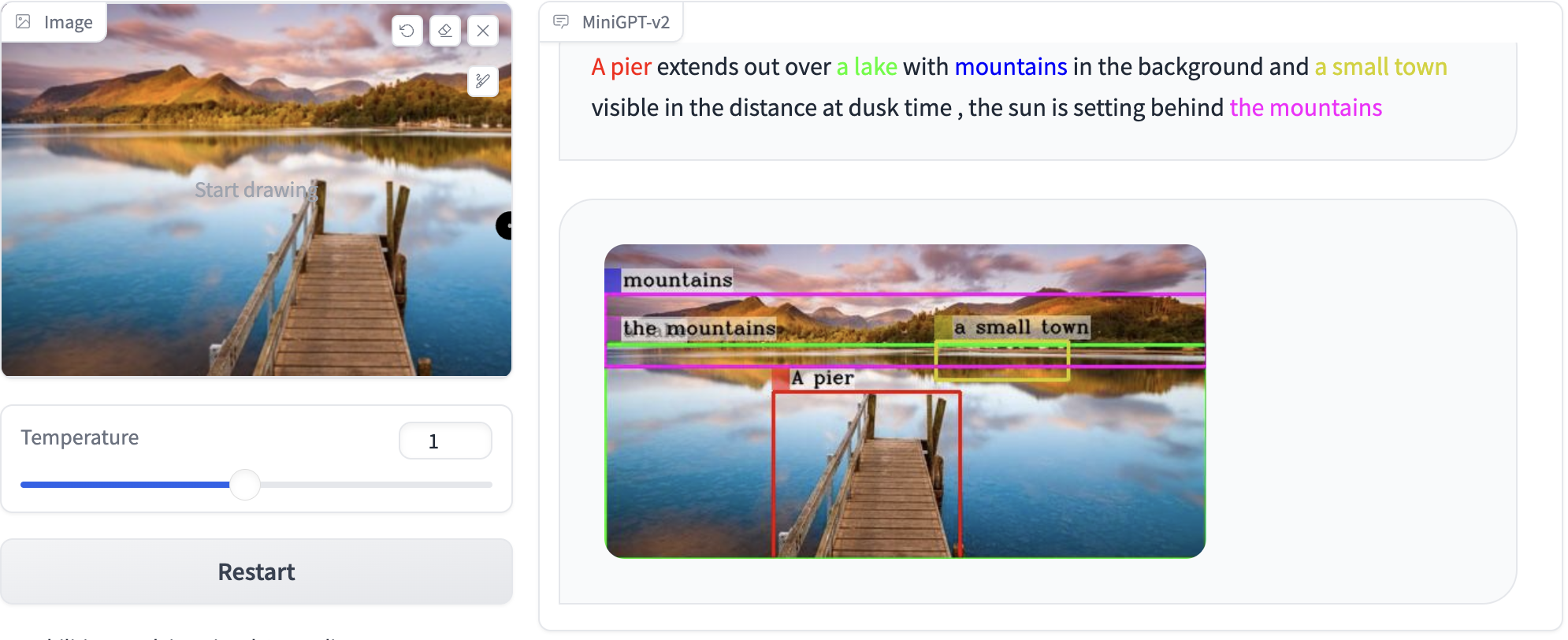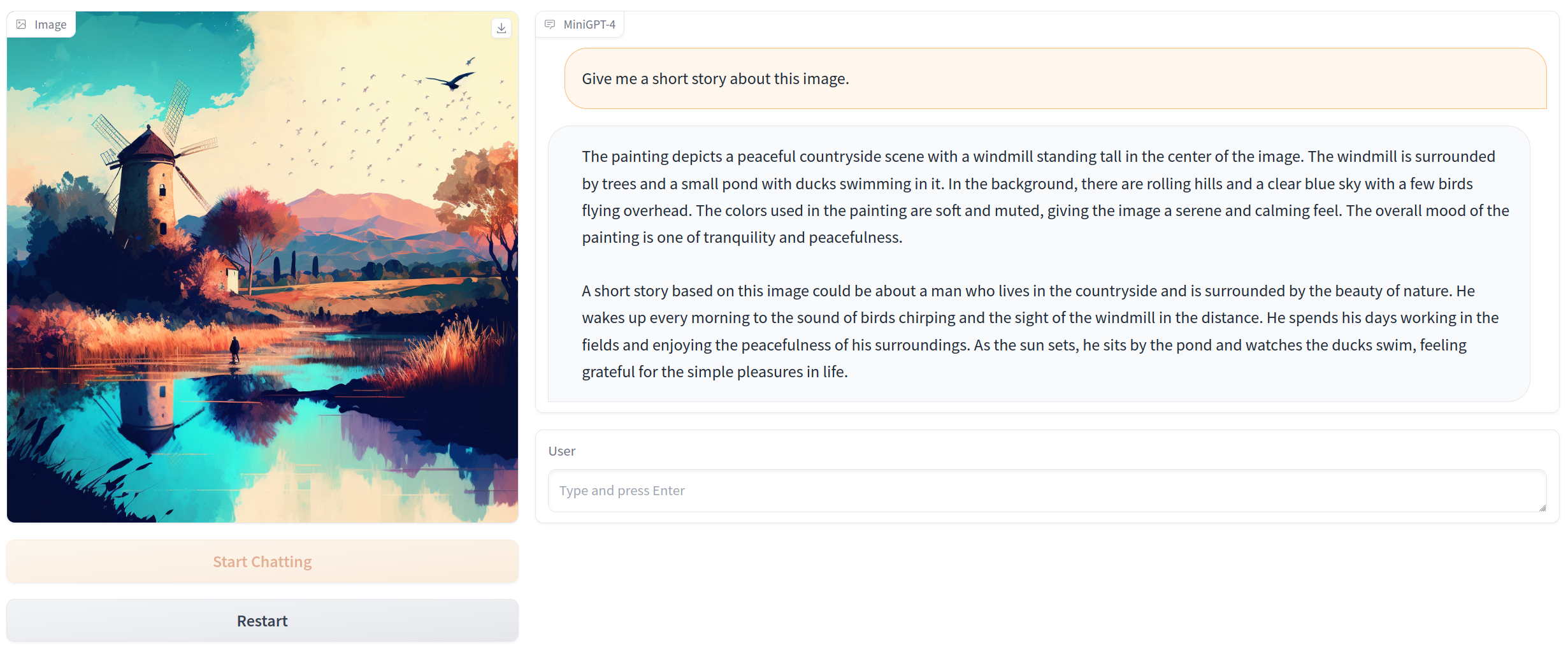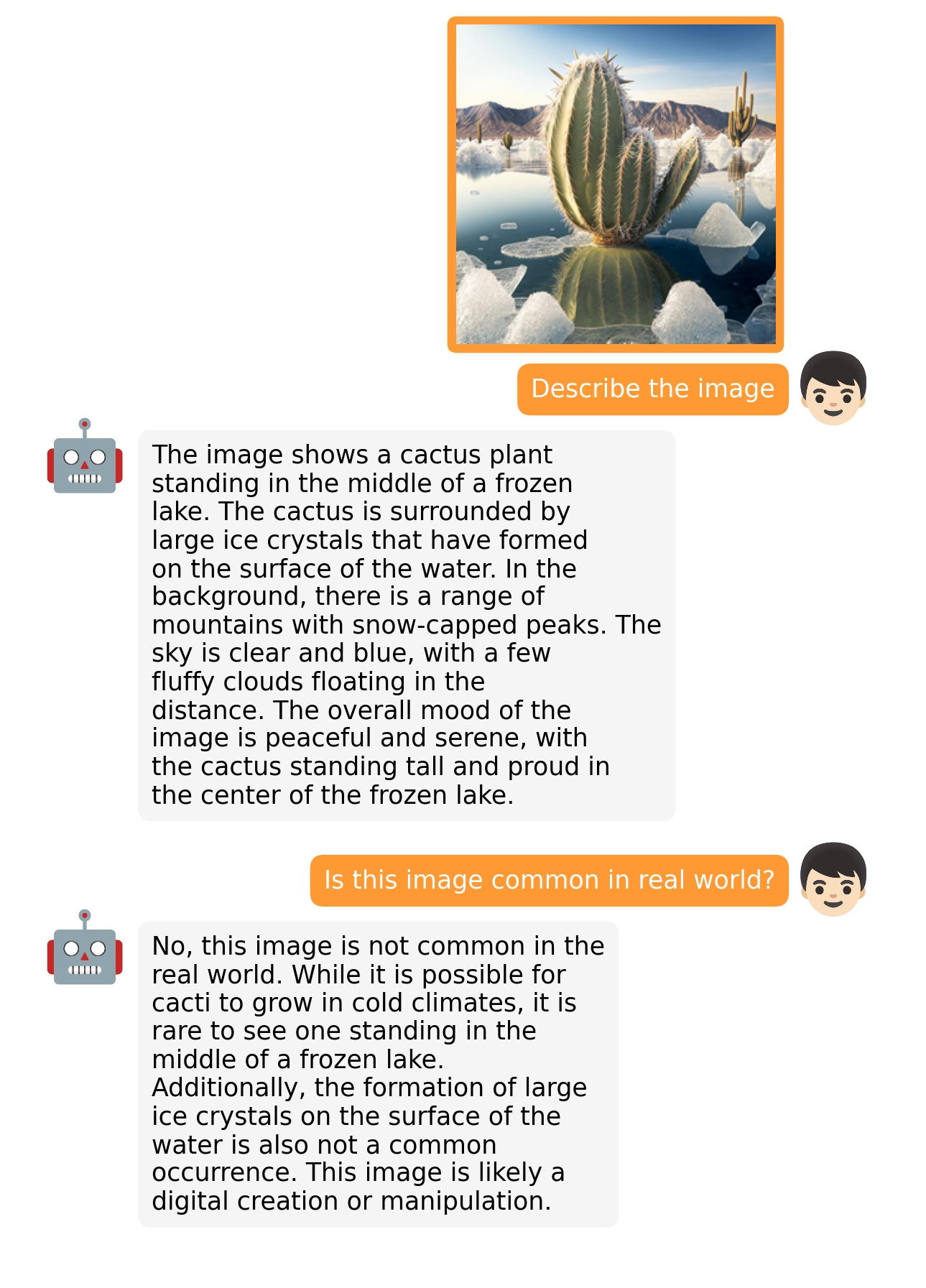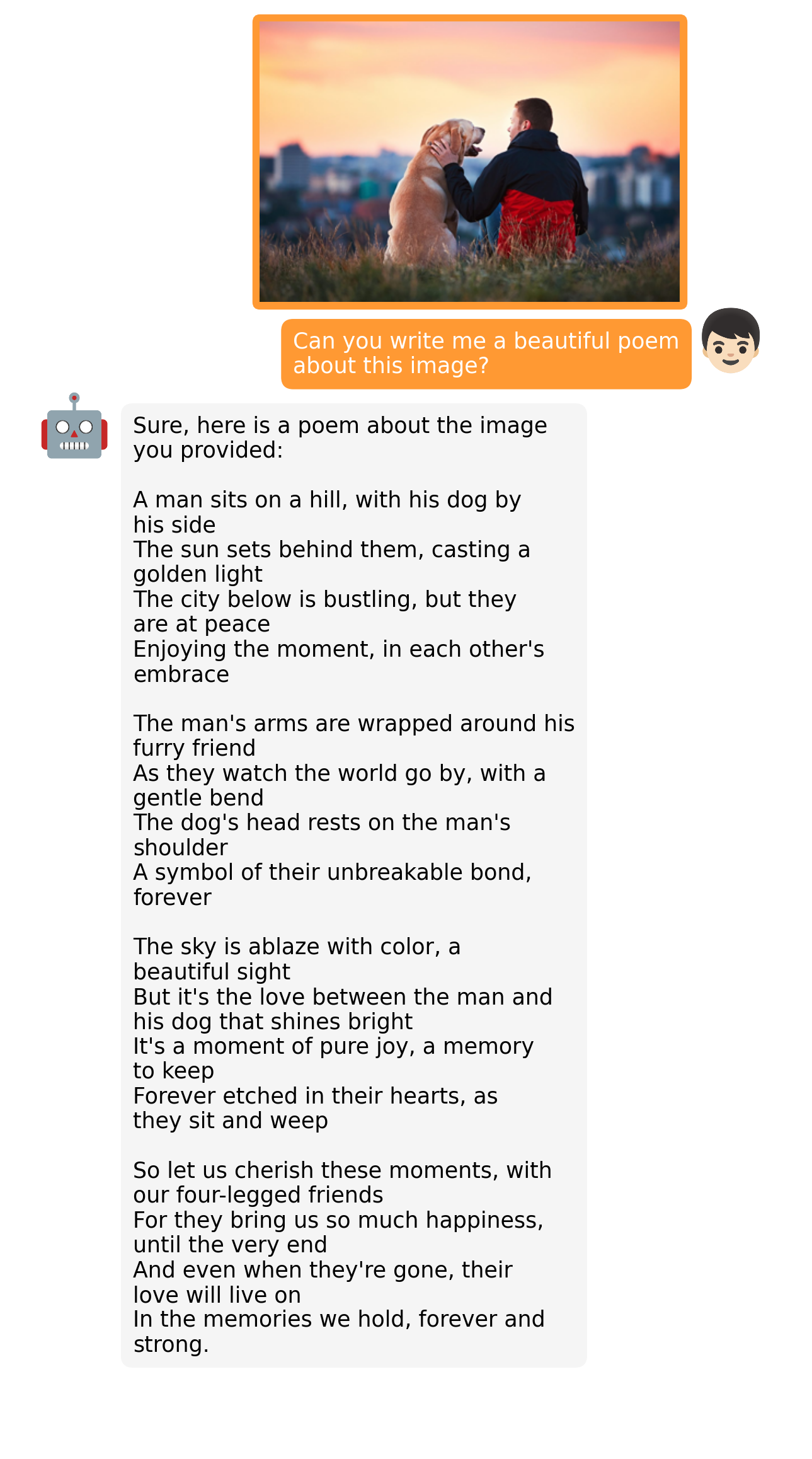King Abdullah University of Science and Technology
Breaking! We release the first major update with our MiniGPT-v2
We now provide a llama 2 version of MiniGPT-4
Click the image to chat with MiniGPT-v2 around your images

Click the image to chat with MiniGPT-4 around your images

 |
 |
 |
 |
More examples can be found in the project page.
1. Prepare the code and the environment
Git clone our repository, creating a python environment and activate it via the following command
git clone https://github.com/Vision-CAIR/MiniGPT-4.git
cd MiniGPT-4
conda env create -f environment.yml
conda activate minigpt42. Prepare the pretrained LLM weights
Currently, we provide both Vicuna V0 and Llama 2 version of MiniGPT-4. Download the corresponding LLM weights from the following huggingface space via clone the repository using git-lfs.
| Vicuna V0 13B | Vicuna V0 7B | Llama 2 Chat 7B |
|---|---|---|
| Downlad | Download | Download |
Then, set the path to the vicuna weight in the model config file here at Line 18 and/or the path to the llama2 weight in the model config file here at Line 15.
3. Prepare the pretrained MiniGPT-4 checkpoint
Download the pretrained checkpoints according to the Vicuna model you prepare.
| Checkpoint Aligned with Vicuna 13B | Checkpoint Aligned with Vicuna 7B | Checkpoint Aligned with Llama 2 Chat 7B |
|---|---|---|
| Download | Download | Download |
Then, set the path to the pretrained checkpoint in the evaluation config file in eval_configs/minigpt4_eval.yaml at Line 8 for Vicuna version or eval_configs/minigpt4_llama2_eval.yaml for LLama2 version.
MiniGPT-v2 checkpoints
MiniGPT-v2 Checkpoint (online demo version) | Download
Try out our demo demo.py for the vicuna version on your local machine by running
python demo.py --cfg-path eval_configs/minigpt4_eval.yaml --gpu-id 0
or for Llama 2 version by
python demo.py --cfg-path eval_configs/minigpt4_llama2_eval.yaml --gpu-id 0
or for MiniGPT-v2 version by
python demo_v2.py --cfg-path eval_configs/minigpt4v2_eval.yaml --gpu-id 0
To save GPU memory, LLMs loads as 8 bit by default, with a beam search width of 1.
This configuration requires about 23G GPU memory for 13B LLM and 11.5G GPU memory for 7B LLM.
For more powerful GPUs, you can run the model
in 16 bit by setting low_resource to False in the relevant config file
(line 6 of either minigpt4_eval.yaml if using Vicuna or minigpt4_llama2_eval.yaml if using Llama 2) and use a larger beam search width.
Thanks @WangRongsheng, you can also run our code on Colab
The training of MiniGPT-4 contains two alignment stages.
1. First pretraining stage
In the first pretrained stage, the model is trained using image-text pairs from Laion and CC datasets to align the vision and language model. To download and prepare the datasets, please check our first stage dataset preparation instruction. After the first stage, the visual features are mapped and can be understood by the language model. To launch the first stage training, run the following command. In our experiments, we use 4 A100. You can change the save path in the config file train_configs/minigpt4_stage1_pretrain.yaml
torchrun --nproc-per-node NUM_GPU train.py --cfg-path train_configs/minigpt4_stage1_pretrain.yamlA MiniGPT-4 checkpoint with only stage one training can be downloaded here (13B) or here (7B). Compared to the model after stage two, this checkpoint generate incomplete and repeated sentences frequently.
2. Second finetuning stage
In the second stage, we use a small high quality image-text pair dataset created by ourselves and convert it to a conversation format to further align MiniGPT-4. To download and prepare our second stage dataset, please check our second stage dataset preparation instruction. To launch the second stage alignment, first specify the path to the checkpoint file trained in stage 1 in train_configs/minigpt4_stage1_pretrain.yaml. You can also specify the output path there. Then, run the following command. In our experiments, we use 1 A100.
torchrun --nproc-per-node NUM_GPU train.py --cfg-path train_configs/minigpt4_stage2_finetune.yamlAfter the second stage alignment, MiniGPT-4 is able to talk about the image coherently and user-friendly.
- BLIP2 The model architecture of MiniGPT-4 follows BLIP-2. Don't forget to check this great open-source work if you don't know it before!
- Lavis This repository is built upon Lavis!
- Vicuna The fantastic language ability of Vicuna with only 13B parameters is just amazing. And it is open-source!
- LLaMA The strong open-sourced LLaMA 2 language model.
If you're using MiniGPT-4 in your research or applications, please cite using this BibTeX:
@article{Chen2023minigpt,
title={MiniGPT-v2: Large Language Model as a Unified Interface for Vision-Language Multi-task Learning},
author={Chen, jun and Deyao, Zhu and Shen, Xiaoqian and Li, Xiang, Liu Zechu, Zhang Pengchuan, Krishnamoorthi Raghuraman, Chandra Vikas, Xiong Yunyang and Elhoseiny, Mohamed},
journal={github},
year={2023}
}
@article{zhu2023minigpt,
title={MiniGPT-4: Enhancing Vision-Language Understanding with Advanced Large Language Models},
author={Zhu, Deyao and Chen, Jun and Shen, Xiaoqian and Li, Xiang and Elhoseiny, Mohamed},
journal={arXiv preprint arXiv:2304.10592},
year={2023}
}This repository is under BSD 3-Clause License. Many codes are based on Lavis with BSD 3-Clause License here.




